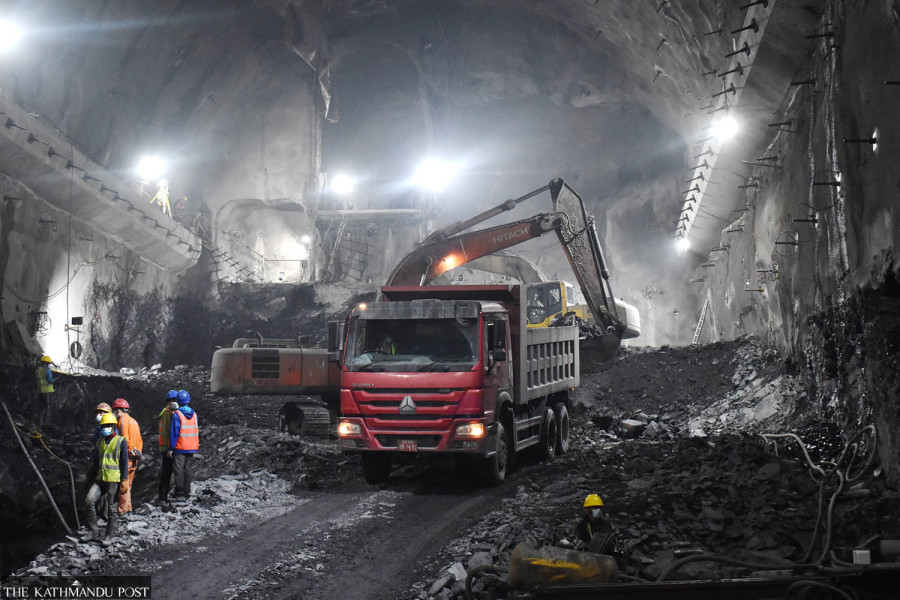Money
Nepal’s FDI stock rose 11.8 percent to Rs295.50 billion
India ranks top with Rs103.5 billion in FDI stock in Nepal, followed by China with Rs35.5 billion, Ireland with Rs22.6 billion and Australia with Rs19.1 billion.
Post Report
Nepal’s foreign direct investment (FDI) stock rose 11.8 percent to Rs295.50 billion at the end of 2022-23, according to a new survey report.
The Survey Report on FDI in Nepal, published by Nepal Rastra Bank, the country’s central bank, on Friday shows that India ranks top with Rs103.5 billion in FDI stock in Nepal, followed by China with Rs35.5 billion, Ireland with Rs22.6 billion, Australia with Rs19.1 billion, and Singapore with Rs18.8 billion.
FDI stock is the value of the share of capital and reserves, including retained profits of the foreign investors in a particular country.
Regarding paid-up capital, the primary component in FDI stock, India tops the chart with Rs.52.6 billion, followed by China with Rs28.5 billion, South Korea with Rs13.9 billion, and Ireland with Rs10.7 billion.
Nepal has received foreign investment from 58 countries as of mid-July 2023.
The survey covers 238 of the 754 active enterprises that obtained FDI approvals from the central bank between 2022 and 2023.
The survey covered 87.5 percent of large-size enterprises, 77.3 percent of medium-size enterprises, and 23.7 percent of small-size firms.
The FDI stock was valued using the company's value appearing in the statement of financial position as shareholders’ equity and debt as well as payables (except trade credits) from foreign direct investors.
The report said that paid-up capital accounted for 52.8 percent of total FDI stock, whereas reserves and loans accounted for 33.7 percent and 13.5 percent, respectively.
The electricity, gas, steam, and air conditioning sector accounts for 30 percent of total FDI stock, followed by the manufacturing sector with 29.4 percent. Both are included in the industrial sector, which accounts for 59.7 percent of total FDI stock.
About 40.2 percent of total FDI stock is in the service sector.
Of this, the financial and insurance services sector constitutes 26 percent, the information and communication sector 6.7 percent, and the accommodation and food services sector 6.3 percent.
Bagmati Province has the highest share of FDI stock (59.7 percent), whereas Lumbini, Karnali, and Sudurpaschim provinces account for less than 1.0 percent of the total FDI stock.
The central bank conducts a survey among FDI enterprises annually to update and compile Nepal's FDI stock by counterpart economies and economic activities. These surveys also compile the liabilities component of Nepal's International Investment Position (IIP) statement.
The capacity utilisation of surveyed FDI enterprises in manufacturing stands at 60.69 percent, whereas the profitability of surveyed FDI enterprises remains at 11.61 percent in 2022-23, the central bank said.
A central bank report said gross FDI inflows decreased 59.6 percent to Rs7.8 billion in 2022-23.
According to the survey report, the divestment of foreign investment (repatriation of investment) during 2022-23 remained at Rs1,807.3 million, around 23.3 percent of gross FDI inflows. The net FDI inflows to Nepal decreased 67.9 percent to Rs6.0 billion in 2022-23.
There is a significant gap between approved FDI and actual net FDI inflows into Nepal. Between 1995-96 and 2022-23, the total net FDI inflow stood at around 35 percent of total FDI approval.
Nepal received an FDI pledge of Rs30.69 billion in 2022-23.
The FDI approval may simply indicate an intended investment (the approved investment may not take place, or there may be significant time lags between approval and actual investments).
According to the report, realising the approved investment may take several years in some instances, as is usually the case with projects with longer gestation periods. As a result, a gap exists between FDI approval and actual net FDI inflows.
Nepal's net international investment position (IIP) remained negative at Rs74.9 billion in 2022-23, compared to Rs271.3 billion in the previous year.
The IIP is a statistical statement that shows the value and composition of residents' financial assets at a point in time, which are claims on non-residents and liabilities of residents of an economy to non-residents.




 19.12°C Kathmandu
19.12°C Kathmandu














